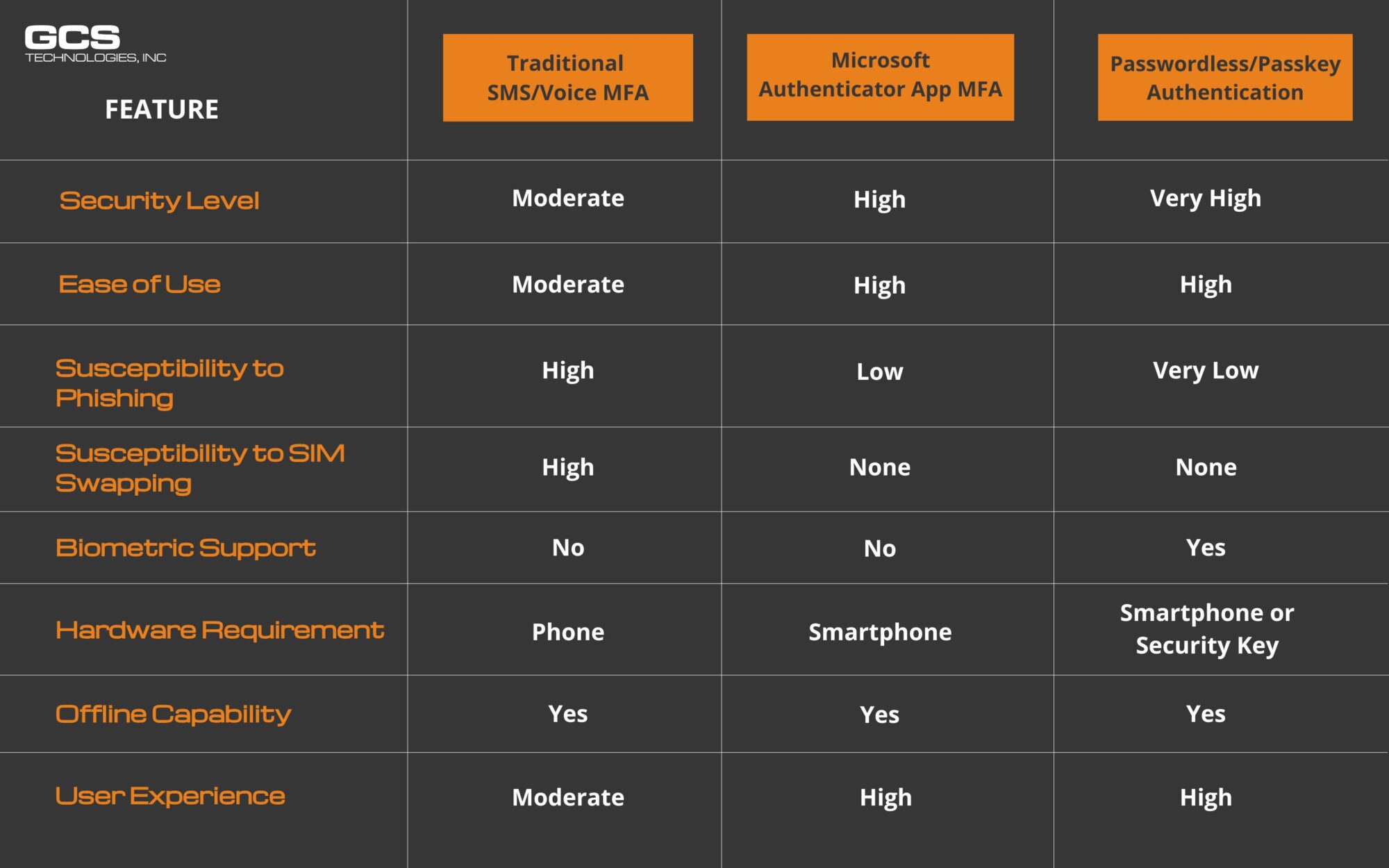More people are become aware of the fact that multi-factor authentication (MFA) is a crucial step in safeguarding your accounts against unauthorized access. While many people still rely on traditional SMS and Voice MFA, these methods have significant vulnerabilities.
In contrast, options like the Microsoft Authenticator app and Passwordless/Passkey authentication offer more secure alternatives.
In this blog, we explore the strengths and weaknesses of these three MFA methods, comparing their security levels, ease of use, and susceptibility to threats to help you make an informed choice for your digital protection.
Traditional SMS and Voice MFA
Traditional SMS or Voice MFA involves sending a one-time code to the user’s phone via SMS or voice call. The user then enters this code to verify their identity. While this method is widely used, it has some security vulnerabilities, such as the risk of SIM swapping or interception of messages.
Microsoft Authenticator Application MFA
The Microsoft Authenticator app provides a more secure form of MFA by using push notifications or time-based one-time passwords (TOTPs). Users receive a notification on their mobile device and can approve or deny the sign-in attempt. This method is more secure than SMS/Voice MFA because it is less susceptible to interception and not susceptible to SIM swapping.
Passwordless/Passkey Authentication
Passwordless authentication eliminates the need for passwords altogether. Instead, users authenticate using biometrics (such as fingerprint or facial recognition) or a hardware security key. This method provides the highest level of security as it is resistant to phishing attacks and password theft.
Comparison Table

Each method has its own strengths and weaknesses, but passwordless/passkey authentication offers the highest level of security and user experience. Microsoft’s Authenticator app MFA is also a strong option, providing a good balance between security and ease of use. Traditional SMS/Voice MFA, while still widely used, is less secure and more susceptible to certain types of attacks but still better than no MFA.
Contact GCS for guidance on implementing Microsoft Authenticator or transitioning to Passwordless authentication. Our team will work with you to assess your current security measures and develop a customized strategy that meets your unique needs.
Written by AJ Arjes-Maddox



